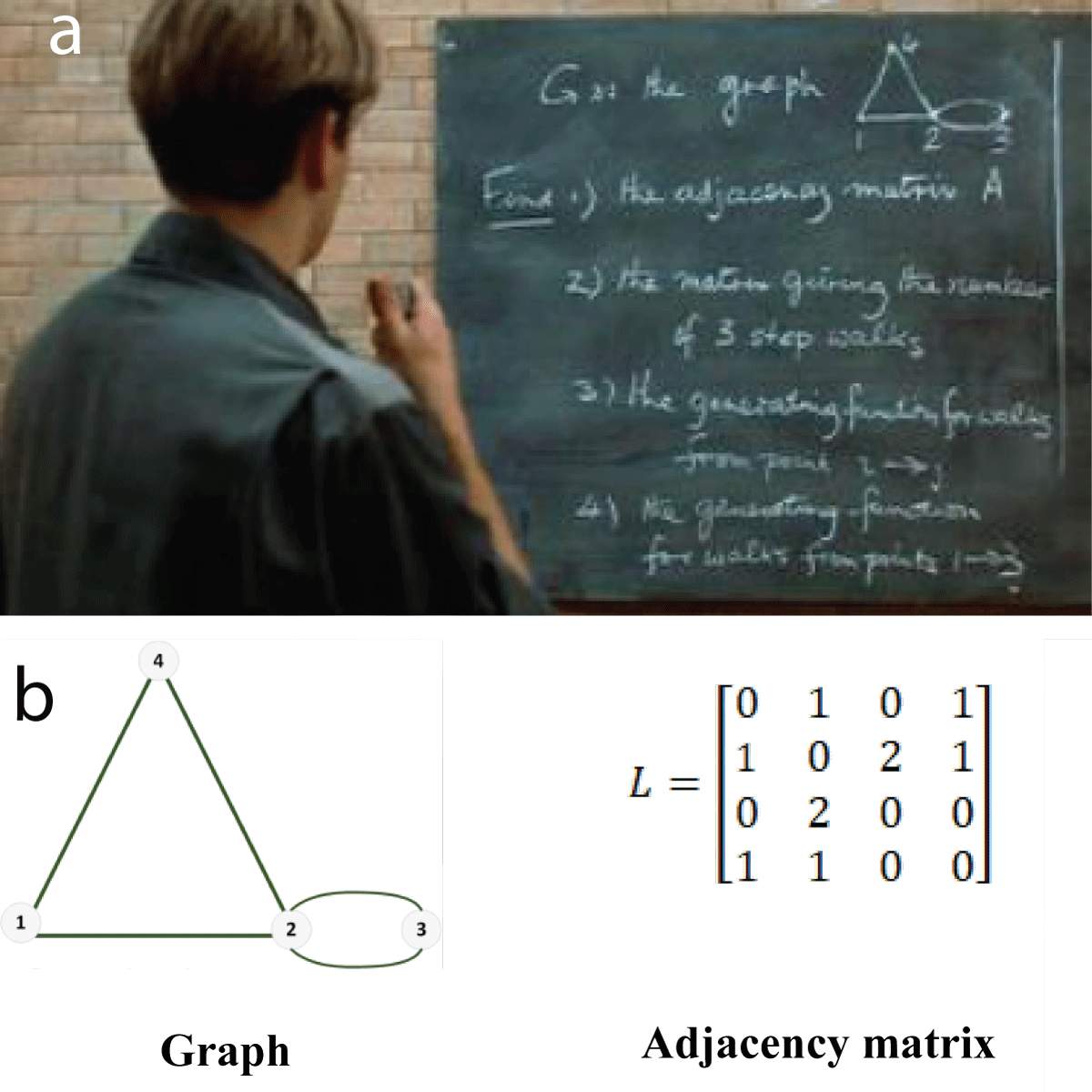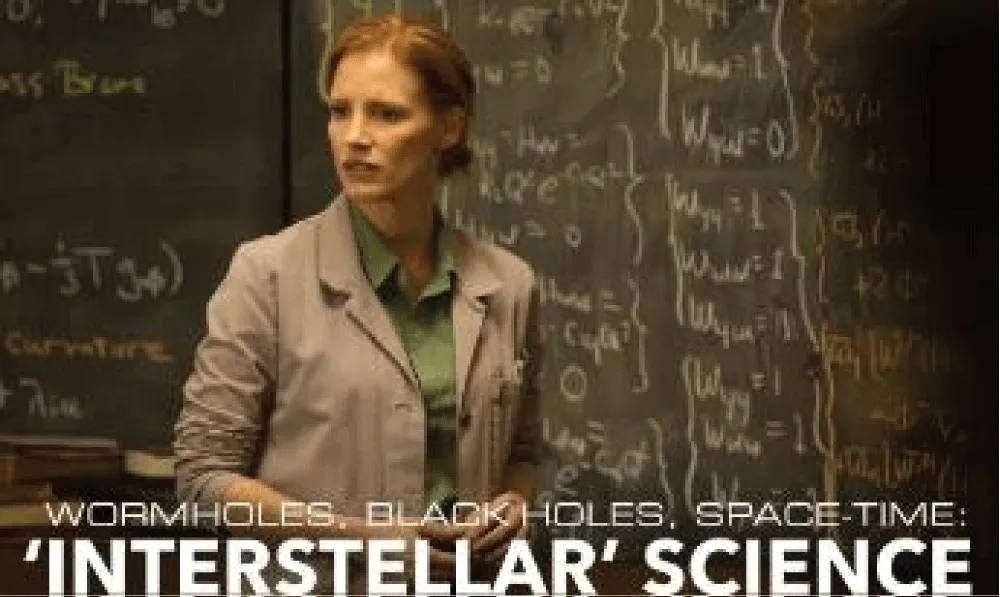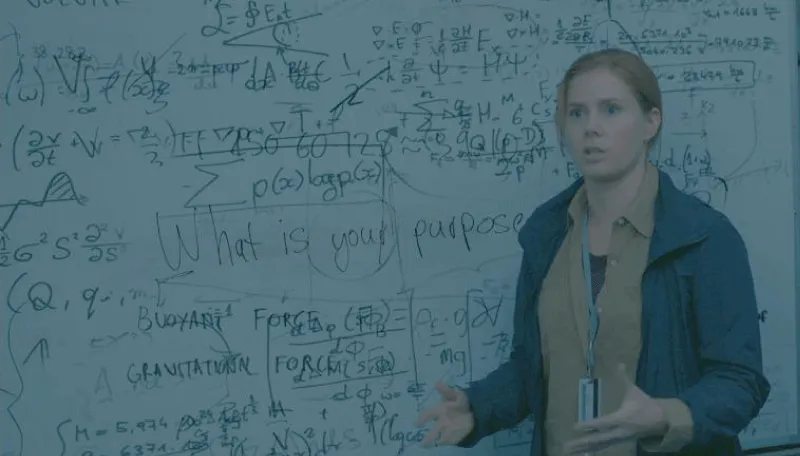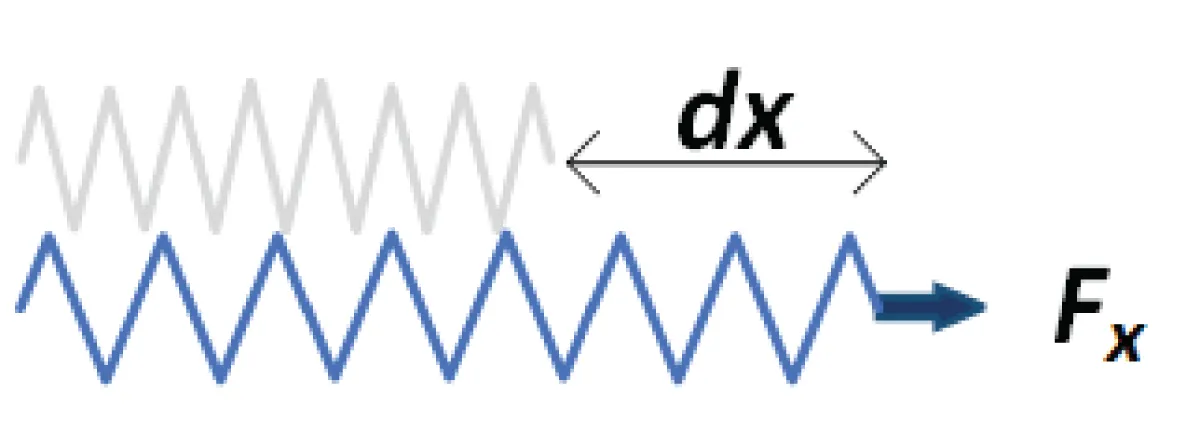
The Educational Role of Cinema in Physical Sciences
Educational Technology受け取った 23 Nov 2023 受け入れられた 28 Nov 2023 オンラインで公開された 29 Nov 2023
ISSN: 2995-8067 | Quick Google Scholar
Next Full Text
A Survey of Motion Data Processing and Classification Techniques Based on Wearable Sensors


受け取った 23 Nov 2023 受け入れられた 28 Nov 2023 オンラインで公開された 29 Nov 2023
Cinema, apart from its entertaining prospect, can flourish knowledge in various fields of daily life and, in particular, in the understanding of the natural world. It could be even embedded in the educational system, at all levels, so as to convey concepts that may be difficult for students in an enjoyable and understandable way. In this mini-review, the educational dimension of the cinema and the related television series is discussed, through the presentation of concepts and phenomena relevant to the natural sciences that have been approached with characteristic scenes of popular cinema movies of our times. We present case studies from physics and astronomy, mathematics, materials science, and engineering that can be easily embedded in the educational curriculum. Notwithstanding the fact that watching movies cannot replace the traditional educational method, it can pose as an alternative, complementary tool for educators.
The educational experience in classrooms at all levels of education has shown that students generally believe that physics, as well as most science-related classes, are difficult to understand, and without particular application to daily life []. According to the research by the US National Science Foundation (NSF), there is a serious decline in understanding and interest in science among people of all ages in the United States []. For example, almost 50% of people don’t know that it takes the Earth one year to complete one orbit around the sun, or that electrons are smaller than atoms []. These examples of incorrect or incomplete understanding of the natural sciences extend beyond the various scientific disciplines, into concepts of everyday life and interaction with the world.
There are many scientific principles from the macro- or the micro- and sub-atomic world, that could be better illustrated by animated pictures, and movies have much to offer towards this direction []. It is a fact that many motion pictures refer to scientific subjects which may not be widely known to the majority of the public. Some approach them superficially, while others give stimuli to the viewer to properly understand a concept or phenomenon. Films dealing with the subject of physics are generally fictional films or dramatizations of real events. In some cases (such as science fiction) the subject matter may extend a bit beyond what we currently know about the world. In any case, the educational dimension of the films is there.
A movie is a cultural tool with multiple interpretations []. In educational inquiry, the learner discovers the answer to questions about the physical world, analog to the Socratic dialectic []. For example, in the movie “Speed 2” students calculate the impact force of a ship on the dock, while in “2001: A Space Odyssey”, students try to calculate the gravity conditions in space, inside the International Space Station. On the other hand, for students at the primary education level, it was found that knowledge was better achieved through performing experiments by the students, compared to the result obtained after watching educational documentaries with experiments in natural sciences [].
Popular motion pictures may reflect ideas about science and technology, but they create perceptions of both the public and scientists in a mutual formation of science and culture. A scientist, as presented in the cinema, has oftentimes a negative, strange image. It is a fact that the character of a mad scientist may be the most recognizable movie scientist. In the work [], six scientist stereotypes have been identified as the conquering movie characters: the alchemist/mad scientist, the professor, the inhuman rationalist, the heroic adventurer, the helpless scientist, and the social idealist. In a different view, depictions of scientists represent the public face of science, playing an important role in building younger students’ understanding of science and its role and the possibility that they will engage with it in the future [].
It is important to keep in mind that movies are not a substitute for formal education. Nevertheless, oftentimes they incorporate scientific concepts and could be used as supplemental educational material, as the visualization they offer could aid in diving deeper into science []. These cases need to be distinguished from cases of “pseudoscience” films, that is, when a phenomenon contradicts accepted scientific facts, and yet is deliberately presented as scientific. The movie The Sixth Sense suggests that ghosts, in addition to actually existing, are connected with a cold environment, although why this should be true is not clear. In a typical scene of the movie, the young hero goes to the bathroom during the night. The sharp drop in temperature at this point bodes for the appearance of a ghost [].
It has been observed that scientists and filmmakers seem to have found a common pace in many cases in the past decades, having presented more and better scientific material either on cinema or on TV []. There are many characteristic film clips with hidden but also more obvious educational content. The scientific advisors of the films have an active role in the presentation of natural laws, directing the creators so that they accurately render natural phenomena and concepts []. Scientists and scientific organizations working on popular films need filmmakers to maintain the authenticity of scientific depictions. Filmmakers, on the other hand, need only ask scientists to help them maintain an acceptable level of verisimilitude, within the constraints of budget, time, and narrative.
During the past decades, there have been many films that tried to capture and promote scientific material to the public. A short list referring to the latest releases, from 2010-2023, is presented in . As shown here, questions such as the effect of artificial intelligence on mankind, the ethical impact of genetics, environmental issues, and space exploration are among the most frequently investigated topics. These are all controversial subjects, and it would be difficult for the non-specialized educator to cover all these issues in the class, especially for the younger students. On the other hand, there are many films in the list (e.g., Rampage) that may have some reference to science, but they are mainly sci-fi films, devoted to entertainment.
In the next Sections, some characteristic movies of all times with concepts from physics, mathematics, materials science, and other fields are further analyzed in detail.
In the Interstellar film (Figure 1), physicist Kip Thorne was actively involved as a scientific consultant. The approach to a black hole is relatively accurate, with the idea that time moves differently as we approach a black hole. However, the film has been criticized for presenting many odd elements in the development of the phenomenon that makes no scientific sense, casting doubt on its scientific validity overall [].
In Figure 2, Shannon’s law of entropy is presented in the center shot, to emphasize the importance of information transmission (data source, communication channel, receiver), as the movie Arrival approaches human communication with alien life forms. Moreover, the Schrödinger equation and Maxwell’s equations are also distinguished.
The TV series The Man Who Fell to Earth, a sequel to the 1976 film, dives deep into the world of cold fusion, introducing the viewer to a hot energy topic of our times, with global interest. Physicist Dr. Melanie Windridge has served as a scientific advisor to the script and production, ensuring that the physics of fusion was presented correctly, and bound to physical laws [].
In another study [], the scene of the movie Indiana Jones: Raiders of the Lost Ark with soldiers who melt due to radioactive radiation when they open the Ark is examined. If it is considered that the Ark was a lead-lined box, with a source of gamma-ray radiation inside it, the required radiation dose required to melt a human in 10 seconds is HT=3.83×107Sv, which gives the absorbed dose rate value of 2.29×108 Gy/min. These values are several orders of magnitude above the accepted radiation dose for humans, so the authors conclude that the effect is accurately attributed to the film.
In one of the episodes of the popular TV series Breaking Bad, the actors have to delete some sensitive information from a laptop located inside a police evidence room. By incorporating a suitable electromagnet, they attempt to erase the hard drive while being outside the building. While the approach has some kind of physical basis, the possibility of this being successful is unlikely, because the electromagnet would need more coils per unit length than its size would allow [].
The connection of cinema with mathematics is perhaps the strongest among the sciences. The Mathematical Movie Database website [] is dedicated to gathering mathematical references in movies and TV series, such as A Beautiful Mind and The Mirror Has Two Faces []. Such films, although not intended to teach mathematics, can foster classroom discussion, developing students’ critical outlook and life attitude.
In the movie Good Will Hunting, the main character is asked to solve a math problem with graphs. Figure 3(a) shows a typical example with four mathematical questions on the blackboard. In question (1) shown here, the constitution of the adjacency matrix is requested. The solution is shown in Figure 3(b). It is a fact that this particular film has been a field of study not only in the understanding of mathematics but also in the analysis of characters, a field that finds application even in the training of Education Consultants [].
 Figure 3: a) Scene with mathematical problems on a blackboard from the movie. Good Will Hunting [] and b) The solution to question 1
Figure 3: a) Scene with mathematical problems on a blackboard from the movie. Good Will Hunting [] and b) The solution to question 1The popular toy dog Slinky of the Toy Story film series, consists of a spring, whose constant can be calculated if one studies a typical scene of the film (Figure 4). Under the weight of two other characters, Woody and RC, Slinky expands by dx. In the work of [] the total weight of the load on the Slinky is calculated as B = 1180gr, while the displacement dx = 175 cm. Applying the spring equation Fx = -kdx, we find that the constant k = 6 Nm-1, which proves that the spring is loose and easily displaced.
Apart from science, a common practice in cinema is the narration and dramatization of historical events. The combination of real historical truth and fiction could be a stimulus for teaching history. The film tells the story with a beginning, middle, and end, leaving a moral message and (usually) a feeling of upliftment []. There are, however, cases where the viewer tends to consider the imaginary as real and does not know how to react, as in the case of the movie The Day After Tomorrow []. The role of the teacher is crucial in such cases, as the one who needs to direct the concepts presented and distinguish fiction from reality [].
Some other examples include the presentation of the concepts of advertising and influencing public opinion through films [] and foreign language teaching, where watching French films with appropriate guidance from teachers brought positive results to students’ understanding and written skills in French, both in everyday and specialized vocabulary [].
Enriching and incrementally reforming science education – from teacher training to developing standards, to improving access for all – is a challenge that the education system should face nowadays. In science education, with the aid of films, either popular ones or more science-specific, educators can guide students on a different journey of knowledge discovery, stimulating their observation and experimentation skills, imagination, curiosity, and reasoning ability. The use of audio-visual tools in class can capture the students’ attention more than the traditional approach to the same subject. In conclusion, we can say that the use of audio-visual tools as a teaching tool in natural sciences can lead to the improvement of its quality.
If science has to keep pace with the needs of society, they must both learn to communicate and interact closer, and education is the primary arena in which this union becomes a reality. The scientific community needs to promote a close relationship with the filmmakers and realize its parallel, educational role. In the era of rapid technological advancements, scientists may offer filmmakers inspiration to deal with everyday subjects that stem from science, even in controversial themes.
Sagri M, Sofos F, Mouzaki D. Digital Storytelling, comics and new technologies in education: Review, research and perspectives. International Education Journal. 2018; 17(4): 4.
Efthimiou CJ, Llewellyn RA. Cinema as a tool for science literacy (arXiv:physics/0404078). arXiv. 2004. https://doi.org/10.48550/arXiv.physics/0404078
Collins A. toward a Design Science of Education. In E. Scanlon & T. O’Shea (Eds.), New Directions in Educational Technology. 1992; 15-22. https://doi.org/10.1007/978-3-642-77750-9_2
Barak M, Ashkar T, Dori YJ. Learning science via animated movies: Its effect on students’ thinking and motivation. Computers & Education. 2011; 56(3): 839–846. https://doi.org/10.1016/j.compedu.2010.10.025
Arroio A. Context Based Learning: A Role for Cinema in Science Education. Science Education International. 2010; 21: 131-143.
Efthimiou CJ, Llewellyn RA. Cinema, Fermi problems and general education. Physics Education. 2007; 42(3): 253. https://doi.org/10.1088/0031-9120/42/3/003
Kapucu MS, Cakmakci G, Aydogdu C. The Influence of Documentary Films on 8th Grade Students’ Views about Nature of Science. Educational Sciences: Theory & Practice. 2015; 15(3): 3. https://doi.org/10.12738/estp.2015.3.2186
Haynes RD. From Faust to Strangelove: Representations of the Scientist in Western Literature. Johns Hopkins University Press. 1994.
Schibeci R, Lee L. Portrayals of science and scientists, and ‘science for citizenship’. Research in Science & Technological Education. 2003; 21(2): 177–192. https://doi.org/10.1080/0263514032000127220
Barak M, Dori YJ. Enhancing undergraduate students’ chemistry understanding through project-based learning in an IT environment. Science Education. 2005; 89(1): 117–139. https://doi.org/10.1002/sce.20027
Stengler E. Beyond Teaching and Learning: Bringing Together Science and Society with and through Movies. In Hollywood Chemistry. American Chemical Society. 2013; 1139: 289-297. https://doi.org/10.1021/bk-2013-1139.ch024
Kirby DA. Science Consultants, Fictional Films, and Scientific Practice. Social Studies of Science. 2003; 33(2): 231–268. https://doi.org/10.1177/03063127030332015
Jones AZ. (n.d.). Movies That Realistically Present Physics. ThoughtCo. https://www.thoughtco.com/great-realistic-physics-movies-2699222
Sloan Science & Film. (n.d.). 2023. https://scienceandfilm.org/articles/3484/science-consultant-melanie-windridge-on-the-man-who-fell-to-earth
Butcher W, Topping N, Sisodia N, Haywood J. A5_2 Indiana Jones: Raiders of the Radioactive Ark. Physics Special Topics. 2021; 20(1): Article 1. https://journals.le.ac.uk/ojs1/index.php/pst/article/view/3927
Allen L, Edwards P, Wynn J. A1_2 Breaking Bad Physics. Physics Special Topics. 2012; 11(1): 1. https://journals.le.ac.uk/ojs1/index.php/pst/article/view/2061
The Mathematical Movie Database. (n.d.). 2023. https://www.qedcat.com/moviemath/
Beltrán-Pellicer P, Medina A, Quero M. Movies and TV Series Fragments in Mathematics: Epistemic Suitability of Instructional Designs. International Journal of Innovation in Science and Mathematics Education. 2018; 26(1): 1. https://openjournals.library.sydney.edu.au/CAL/article/view/12126
Koch G, Dollarhide CT. Using a Popular Film in Counselor Education: Good Will Hunting as a Teaching Tool. Counselor Education and Supervision. 2000; 39(3), 203–210. https://doi.org/10.1002/j.1556-6978.2000.tb01232.x
Harvard Mathematics Department. (2023). https://people.math.harvard.edu/
Cox T, Fernandez KP, Mead L, Seagrave J. P5_7 Examining the Material Properties of Slinky Dog. Physics Special Topics. 2020; 19(1): 1. https://journals.le.ac.uk/ojs1/index.php/pst/article/view/3702
Rosenstone RA. The Historical Film as Real History. Filmhistoria Online. 1995; 5(1): 1.
Lowe T, Brown K, Dessai S, de França Doria M, Haynes K, Vincent K. Does tomorrow ever come? Disaster narrative and public perceptions of climate change. Public Understanding of Science. 2006; 15(4): 435-457. https://doi.org/10.1177/0963662506063796
Donnelly D. Using Feature Film in the Teaching of History: The Practitioner Decision-Making Dynamic. Journal of International Social Studies. 2014; 4(1): 17-27.
Poli A. Teaching and learning cinema and visual languages through economics-business studies and law in high school: An experimental interdisciplinary approach. World Journal on Educational Technology: Current Issues. 2016; 8(1): 1. https://doi.org/10.18844/wjet.v8i1.502
Jordan R. Integrating Francophone Cinema into the High School French Class. Studies in Teaching 2016 Research Digest, Winston-Salem, NC. 2016.
Sagri M, Vavougios D, Sofos F. The Educational Role of Cinema in Physical Sciences. IgMin Res. 29 Nov, 2023; 1(1): 094-097. IgMin ID: igmin121; DOI: 10.61927/igmin121; Available at: www.igminresearch.com/articles/pdf/igmin121.pdf
次のリンクを共有した人は、このコンテンツを読むことができます:
Address Correspondence:
Filippos Sofos, Department of Physics, University of Thessaly, 35100 Lamia, Greece, Email: [email protected]
How to cite this article:
Sagri M, Vavougios D, Sofos F. The Educational Role of Cinema in Physical Sciences. IgMin Res. 29 Nov, 2023; 1(1): 094-097. IgMin ID: igmin121; DOI: 10.61927/igmin121; Available at: www.igminresearch.com/articles/pdf/igmin121.pdf
Copyright: © 2023 Sagri M, et al. This is an open access article distributed under the Creative Commons Attribution License, which permits unrestricted use, distribution, and reproduction in any medium, provided the original work is properly cited.
 Figure 1: Scene from Interstellar (https://people.math.harva...
Figure 1: Scene from Interstellar (https://people.math.harva...
 Figure 2: Scene from Arrival (https://people.math.harvard.ed...
Figure 2: Scene from Arrival (https://people.math.harvard.ed...
![a) Scene with mathematical problems on a blackboard from the movie. Good Will Hunting [20] and b) The solution to question 1](https://www.igminresearch.jp/articles/figures/igmin121/igmin121.g003.webp) Figure 3: a) Scene with mathematical problems on a blackboar...
Figure 3: a) Scene with mathematical problems on a blackboar...
 Figure 4: A spring model of the Slinky dog....
Figure 4: A spring model of the Slinky dog....
 Table 1: Popular films with scientific content from 2010-20...
Table 1: Popular films with scientific content from 2010-20...
Sagri M, Sofos F, Mouzaki D. Digital Storytelling, comics and new technologies in education: Review, research and perspectives. International Education Journal. 2018; 17(4): 4.
Efthimiou CJ, Llewellyn RA. Cinema as a tool for science literacy (arXiv:physics/0404078). arXiv. 2004. https://doi.org/10.48550/arXiv.physics/0404078
Collins A. toward a Design Science of Education. In E. Scanlon & T. O’Shea (Eds.), New Directions in Educational Technology. 1992; 15-22. https://doi.org/10.1007/978-3-642-77750-9_2
Barak M, Ashkar T, Dori YJ. Learning science via animated movies: Its effect on students’ thinking and motivation. Computers & Education. 2011; 56(3): 839–846. https://doi.org/10.1016/j.compedu.2010.10.025
Arroio A. Context Based Learning: A Role for Cinema in Science Education. Science Education International. 2010; 21: 131-143.
Efthimiou CJ, Llewellyn RA. Cinema, Fermi problems and general education. Physics Education. 2007; 42(3): 253. https://doi.org/10.1088/0031-9120/42/3/003
Kapucu MS, Cakmakci G, Aydogdu C. The Influence of Documentary Films on 8th Grade Students’ Views about Nature of Science. Educational Sciences: Theory & Practice. 2015; 15(3): 3. https://doi.org/10.12738/estp.2015.3.2186
Haynes RD. From Faust to Strangelove: Representations of the Scientist in Western Literature. Johns Hopkins University Press. 1994.
Schibeci R, Lee L. Portrayals of science and scientists, and ‘science for citizenship’. Research in Science & Technological Education. 2003; 21(2): 177–192. https://doi.org/10.1080/0263514032000127220
Barak M, Dori YJ. Enhancing undergraduate students’ chemistry understanding through project-based learning in an IT environment. Science Education. 2005; 89(1): 117–139. https://doi.org/10.1002/sce.20027
Stengler E. Beyond Teaching and Learning: Bringing Together Science and Society with and through Movies. In Hollywood Chemistry. American Chemical Society. 2013; 1139: 289-297. https://doi.org/10.1021/bk-2013-1139.ch024
Kirby DA. Science Consultants, Fictional Films, and Scientific Practice. Social Studies of Science. 2003; 33(2): 231–268. https://doi.org/10.1177/03063127030332015
Jones AZ. (n.d.). Movies That Realistically Present Physics. ThoughtCo. https://www.thoughtco.com/great-realistic-physics-movies-2699222
Sloan Science & Film. (n.d.). 2023. https://scienceandfilm.org/articles/3484/science-consultant-melanie-windridge-on-the-man-who-fell-to-earth
Butcher W, Topping N, Sisodia N, Haywood J. A5_2 Indiana Jones: Raiders of the Radioactive Ark. Physics Special Topics. 2021; 20(1): Article 1. https://journals.le.ac.uk/ojs1/index.php/pst/article/view/3927
Allen L, Edwards P, Wynn J. A1_2 Breaking Bad Physics. Physics Special Topics. 2012; 11(1): 1. https://journals.le.ac.uk/ojs1/index.php/pst/article/view/2061
The Mathematical Movie Database. (n.d.). 2023. https://www.qedcat.com/moviemath/
Beltrán-Pellicer P, Medina A, Quero M. Movies and TV Series Fragments in Mathematics: Epistemic Suitability of Instructional Designs. International Journal of Innovation in Science and Mathematics Education. 2018; 26(1): 1. https://openjournals.library.sydney.edu.au/CAL/article/view/12126
Koch G, Dollarhide CT. Using a Popular Film in Counselor Education: Good Will Hunting as a Teaching Tool. Counselor Education and Supervision. 2000; 39(3), 203–210. https://doi.org/10.1002/j.1556-6978.2000.tb01232.x
Harvard Mathematics Department. (2023). https://people.math.harvard.edu/
Cox T, Fernandez KP, Mead L, Seagrave J. P5_7 Examining the Material Properties of Slinky Dog. Physics Special Topics. 2020; 19(1): 1. https://journals.le.ac.uk/ojs1/index.php/pst/article/view/3702
Rosenstone RA. The Historical Film as Real History. Filmhistoria Online. 1995; 5(1): 1.
Lowe T, Brown K, Dessai S, de França Doria M, Haynes K, Vincent K. Does tomorrow ever come? Disaster narrative and public perceptions of climate change. Public Understanding of Science. 2006; 15(4): 435-457. https://doi.org/10.1177/0963662506063796
Donnelly D. Using Feature Film in the Teaching of History: The Practitioner Decision-Making Dynamic. Journal of International Social Studies. 2014; 4(1): 17-27.
Poli A. Teaching and learning cinema and visual languages through economics-business studies and law in high school: An experimental interdisciplinary approach. World Journal on Educational Technology: Current Issues. 2016; 8(1): 1. https://doi.org/10.18844/wjet.v8i1.502
Jordan R. Integrating Francophone Cinema into the High School French Class. Studies in Teaching 2016 Research Digest, Winston-Salem, NC. 2016.